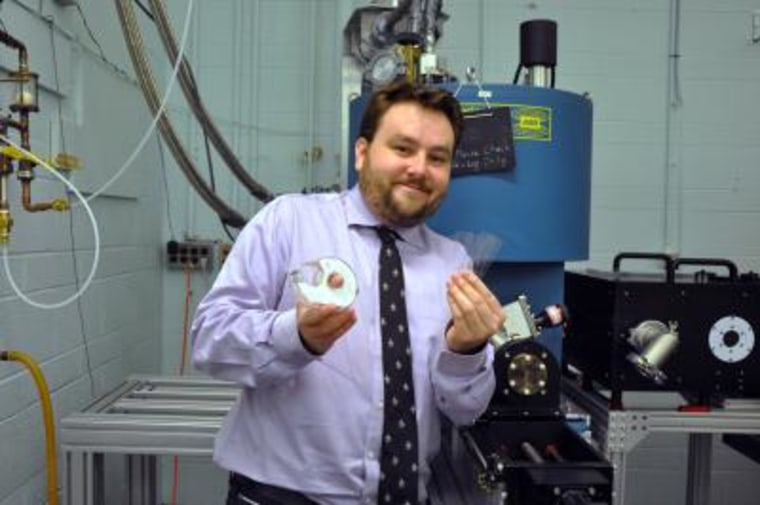
Even in the out-there world of quantum computing, there’s a use for Scotch tape, according to researchers who used the adhesive to give a semiconductor the properties of a so-called high-temperature superconductor.
The breakthrough is a step toward building the quantum computers of the future and “shows that the standard approach of doing more and more complicated things is not always the best solution,” Kenneth Burch, a physicist at the University of Toronto, told me Wednesday.
High-temperature superconductors are materials that conduct electricity without heating up and losing energy while operating in the liquid nitrogen range, about minus 321 degrees Fahrenheit. While that’s far from warm, “it’s a factor of 10 higher than what you could do before,” Burch explained.
The problem is that high-temperature superconductor properties are only found in compounds of iron, copper and oxygen that have been impossible to incorporate into semiconductors such as silicon used in computer chips due to unbridgable differences in the structure and chemical makeup of the different materials.
Until now, therefore, incorporating superconductor properties into semiconductors has been done only at lower temperatures, below minus 418 degrees F.
To overcome this hurdle, Burch and colleagues used double-sided Scotch tape to stick a high-temperature superconductor onto a glass slide and attach it to another glass slide with a special type of semiconductor called a topological insulator taped to it.
“We put one on top of the other and what happened is the high-temperature superconductivity from the superconductor bled over into the semiconductor,” Burch explained.
He likened the bleeding-over effect to “static electricity, where you bring one thing to the other and they grab each other.”
While the technique, today is at the gee-whiz stage, Burch said it is a stepping stone on the path to building quantum computers of the future with superconductors. Such computers, for example, will be able to break down large numbers into their prime components, making code cracking easier.
A paper on the research was published Sept. 11 in the journal Nature Communications.
– via Gizmodo
John Roach is a contributing writer for NBC News Digital. To learn more about him, check out his website. For more of our Future of Technology series, watch the featured video below.